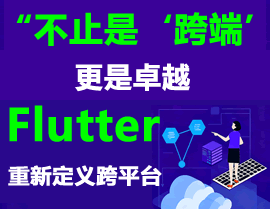uni-app 微信小程序中 使用live-pusher 自定义拍照 snapshot快门方法 不能正确触发回调
uni-app 微信小程序中 使用live-pusher 自定义拍照 snapshot快门方法 不能正确触发回调
| 开发环境 | 版本号 | 项目创建方式 |
|---|---|---|
| Windows | w10 | HBuilderX |
产品分类:uniapp/App
PC开发环境操作系统:Windows
HBuilderX类型:正式
HBuilderX版本号:3.99
手机系统:Android
手机系统版本号:Android 14
手机厂商:荣耀
手机机型:荣耀v30pro
页面类型:vue
vue版本:vue2
打包方式:云端
项目创建方式:HBuilderX
示例代码:
<view class="live-camera" :style="{ width: '100vw', height: '100vh' }">
<heads title=" " titleColor="transparent" :bgColor='bgColor' :border="true" :ishead_w="3" class="title">
</heads>
<live-pusher id="livePusher" ref="livePusher" class="livePusher" mode="FHD" beauty="0" whiteness="0"
:aspect="aspect" min-bitrate="1000" audio-quality="16KHz" device-position="back" :auto-focus="true"
:muted="true" :enable-camera="true" :enable-mic="false" :zoom="false" @statechange="statechange"
:style="{ width: '100vw', height: '100vh'}"></live-pusher>
<view class="mongban flex-col">
<text class="text1">拍摄{{imgtype==1?'舌苔':'舌底'}}照片</text>
<text>舌头{{imgtype==1?'向下伸长':'向上抬起'}},口张大</text>
<image v-if="imgtype==1" class="stzm" :src="stzm"></image>
<image v-else class="stbm" :src="stbm"></image>
<image class="discriputimg" :src="discriputimg"></image>
<view class="flex-bet bot-area" style="box-sizing: border-box;flex-direction: row; width: 540rpx;">
<image @click="flip" class="camera" :src="switchimg" hover-class="avtive"></image>
<image @click='snapshot' class="shutterBox" hover-class="avtive" :src="cerclebut"></image>
<image @click="uploadImage" class="camera" :src="pucture" hover-class="avtive"></image>
</view>
</view>
</view>
`更多关于uni-app 微信小程序中 使用live-pusher 自定义拍照 snapshot快门方法 不能正确触发回调的实战教程也可以访问 https://www.itying.com/category-93-b0.html
解决了吗?
更多关于uni-app 微信小程序中 使用live-pusher 自定义拍照 snapshot快门方法 不能正确触发回调的实战教程也可以访问 https://www.itying.com/category-93-b0.html
在 uni-app 中使用 live-pusher 组件进行自定义拍照时,可能会遇到 snapshot 方法无法正确触发回调的问题。这个问题通常与微信小程序的实现机制以及 uni-app 的封装方式有关。以下是一些可能的解决方案和排查步骤:
1. 确保 live-pusher 组件正确初始化
live-pusher 需要正确初始化后才能使用 snapshot 方法。确保 live-pusher 已经成功启动并且处于运行状态。
<live-pusher
id="livePusher"
url="rtmp://example.com/live/stream"
mode="SD"
autopush
@statechange="onStateChange"
></live-pusher>
export default {
methods: {
onStateChange(e) {
console.log('live-pusher state change:', e.detail.code);
if (e.detail.code === 2004) {
// 2004 表示推流成功
this.isPusherReady = true;
}
},
takeSnapshot() {
if (!this.isPusherReady) {
console.error('live-pusher is not ready');
return;
}
const livePusher = uni.createLivePusherContext('livePusher', this);
livePusher.snapshot({
success(res) {
console.log('snapshot success:', res);
},
fail(err) {
console.error('snapshot failed:', err);
},
});
},
},
};
2. 检查 snapshot 方法的调用时机
snapshot 方法需要在 live-pusher 组件完全加载后调用。如果 live-pusher 尚未准备好,可能会导致回调无法触发。可以通过 @statechange 事件监听组件的状态,确保在推流成功后再调用 snapshot。
3. 使用原生微信小程序代码测试
为了确定是否是 uni-app 封装导致的问题,可以尝试在原生微信小程序中直接使用 live-pusher 和 snapshot 方法,看看是否能正常触发回调。
Page({
takeSnapshot() {
const livePusher = this.selectComponent('#livePusher');
livePusher.snapshot({
success(res) {
console.log('snapshot success:', res);
},
fail(err) {
console.error('snapshot failed:', err);
},
});
},
});
如果原生微信小程序中可以正常触发回调,那么问题可能出在 uni-app 的封装上。
4. 检查 uni-app 版本
确保使用的 uni-app 版本是最新的,因为旧版本可能存在兼容性问题。可以通过以下命令更新 uni-app:
npm install @dcloudio/uni-app@latest
5. 使用 uni.createLivePusherContext 获取上下文
在 uni-app 中,需要使用 uni.createLivePusherContext 获取 live-pusher 的上下文对象,而不是直接使用 this.selectComponent。
const livePusher = uni.createLivePusherContext('livePusher', this);
livePusher.snapshot({
success(res) {
console.log('snapshot success:', res);
},
fail(err) {
console.error('snapshot failed:', err);
},
});
6. 检查微信开发者工具版本
确保使用的是最新版本的微信开发者工具,旧版本可能存在兼容性问题。
7. 调试错误信息
如果 snapshot 方法仍然无法触发回调,可以通过 fail 回调获取详细的错误信息,帮助定位问题。
livePusher.snapshot({
success(res) {
console.log('snapshot success:', res);
},
fail(err) {
console.error('snapshot failed:', err);
},
});
8. 尝试其他方法
如果 snapshot 方法始终无法正常工作,可以尝试使用其他方式实现拍照功能,例如使用 camera 组件。
<camera
device-position="back"
flash="off"
@error="onCameraError"
></camera>
<button @click="takePhoto">拍照</button>
export default {
methods: {
takePhoto() {
const camera = uni.createCameraContext('camera', this);
camera.takePhoto({
quality: 'high',
success(res) {
console.log('拍照成功:', res.tempImagePath);
},
fail(err) {
console.error('拍照失败:', err);
},
});
},
},
};





